#879 Irregular Galaxy Sextans A November 14, 1997
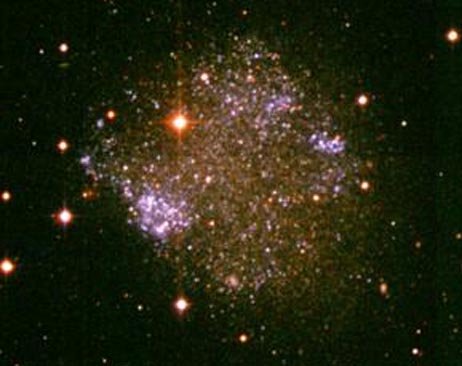
“Grand spiral galaxies often seem to get all the glory. Their newly formed, bright, blue star clusters found along beautiful, symmetric spiral arms are guaranteed to attract attention. But small irregular galaxies form stars too, like this lovely, gumdrop-shaped galaxy, Sextans A. A member of the local group of galaxies which includes the massive spirals Andromeda and our own Milky Way, Sextans A is about 10 million light years distant. The bright Milky Way foreground stars appear yellowish in this view. Beyond them lie the stars of Sextans A with tantalizing young blue clusters clearly visible."
Copyright: Public domain
#880 Uranus: The Tilted Planet November 15, 1997
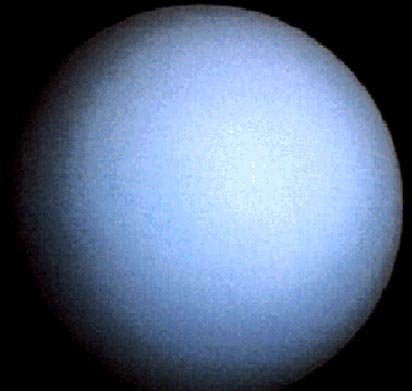
“Uranus is the third largest planet after Jupiter and Saturn. This picture was snapped by the Voyager 2 spacecraft in 1986 - the only spacecraft ever to visit Uranus. Uranus has many moons and a ring system. Uranus is composed mostly of rock and ices, but with a thick hydrogen and helium atmosphere. Uranus is peculiar in that its rotation axis is greatly tilted and sometimes points near the Sun. It remains an astronomical mystery why Uranus' axis is so tilted. Uranus and Neptune are very similar."
Copyright: Public domain
#881 The Leonid Meteor Shower November 16, 1997
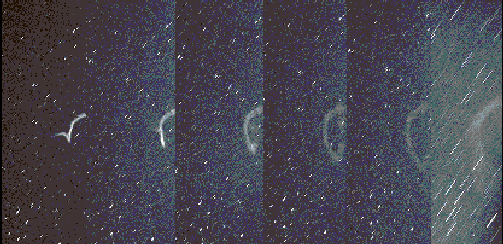
“The Leonid Meteor Shower will likely reach its peak in the early hours this Monday morning. Though the Moon will be bright, Leo, the shower's radiant point, will be well above the eastern horizon from Western North America and the Pacific region during this period. This year's Leonids may prove particularly exciting as observers anticipate the legendary Leonid storm of activity will occur sometime during the next few apparitions of this annual meteor shower - although most expect the meteor storm to occur in 1998 or 1999. Meteor showers result from debris left by passing comets. The Leonids specifically are small pieces of Comet Tempel-Tuttle. In the above series of time-lapse, 1-minute exposures, a 1995 Leonid is seen to leave a train of hot air that glowed persistently for several minutes."
Copyright: Public domain
#882 Barringer Crater on Earth November 17, 1997
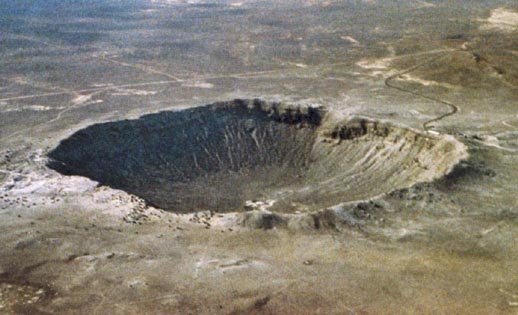
“What happens when a meteor hits the ground? Usually nothing much, as most meteors are small, and indentations they make are soon eroded away. 49,000 years ago, however, a large meteor created Barringer Meteor Crater in Arizona, pictured above. Barringer is over a kilometer across. In 1920, it was the first feature on Earth to be recognized as an impact crater. Today, over 100 terrestrial impact craters have been identified. Early this morning, the Leonid Meteor Shower reaches its peak, although no impacts of this magnitude are expected."
Copyright: Public domain
#883 In the Center of the Trapezium November 18, 1997
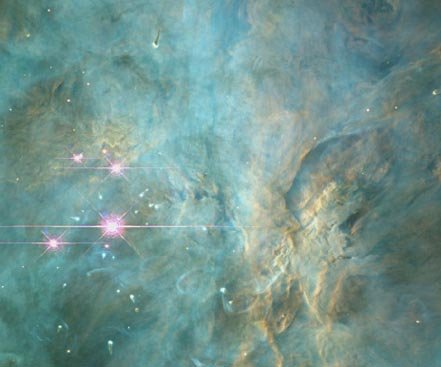
“Start with the constellation of Orion. Below Orion's belt is a fuzzy area known as the Great Nebula of Orion or M42. In this nebula is a bright star cluster known as the Trapezium, shown above. New stellar systems are forming there in gigantic globs of gas and dust known as Proplyds. Looking closely at the above picture also reveals that gas and dust surrounding some of the dimmer stars appears to form structures that point away from the brighter stars. The above false color image was made by combining several exposures from the Hubble Space Telescope."
Copyright: Public domain
#884 Diffraction Spikes: When Stars Look Like Crosses November 19, 1997
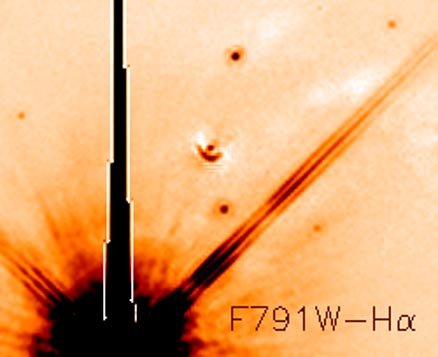
“Unusual appendages around bright stars are commonplace, but never seem to be mentioned. What are they? First, a telescope brings starlight falling over a large area to a small area. To get at this small area, however, one must go inside a reflecting telescope, and this can only be done with support rods, which are right in the view of the telescope. The wave nature of light causes it to deflect when passing near these rods. Light scatters away from the original destination point ending up elsewhere and appearing as "diffraction spikes." These annoying spikes steal precious light from the central image and hide light from fainter, more interesting stars. Above, astronomers are more interested in the half-circled point near the image center, than the cool-looking diffraction spikes from the bright star at the bottom. Apparently, that half-circle is a new stellar system forming in the Lagoon Nebula."
Copyright: Public domain
#885 Escape From The Sun November 20, 1997
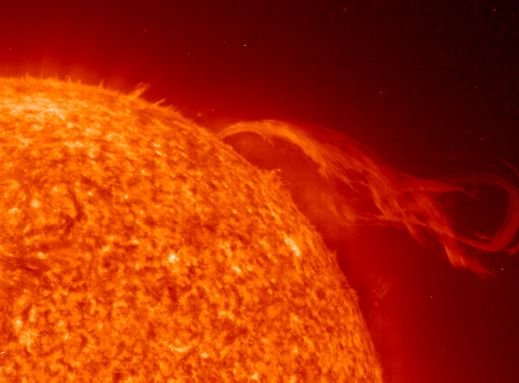
“Twisted magnetic fields arching from the solar surface can trap ionized gas, suspending it in huge looping structures. These majestic plasma arches are seen as prominences above the solar limb. On September 14, this dramatic and detailed image was recorded by the EIT experiment on board the space-based SOHO observatory in the light emitted by ionized Helium. It shows hot plasma escaping into space as a fiery prominence breaks free from magnetic confinement a hundred thousand miles above the Sun. These awesome events bear watching as they can affect communications and power systems ninety three million miles away on Planet Earth."
Copyright: Public domain
#886 Jupiter: Moon, Ring, and Clouds November 21, 1997
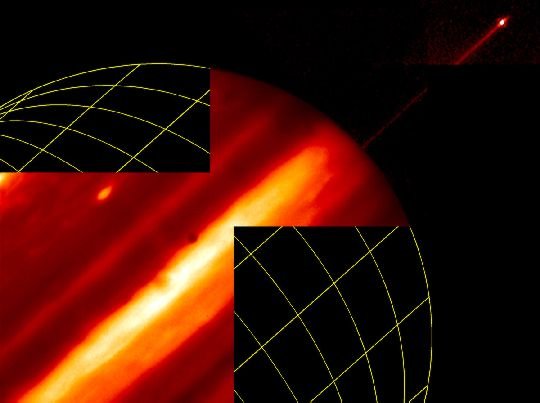
“An inner moon, an edge-on, planet-girdling ring, and high altitude cloud bands are visible in this mosaic of infrared images of gas giant Jupiter. The moon Metis, 25 miles wide and about 80,000 miles from the planet, is the bright spot at the upper right. Metis lies within Jupiter's faint, tenuous ring, and may be a source of ring material. Recorded on September 17th by the NICMOS instrument on board the Hubble Space Telescope, these pictures also emphasize atmospheric features high above the main jovian cloud deck. Methane gas in Jupiter's atmosphere absorbs the near infrared light causing deeper clouds to appear dark at these wavelengths. Clouds riding above most of the atmospheric methane are bright. The circular dark spot just above the brightest cloud band is an image artifact."
Copyright: Public domain
Upvote! Resteem! Comment! As you like it! Thank you for attention!